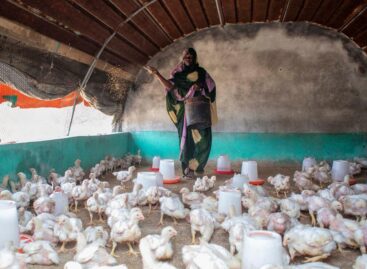Prices of several staples up to multi-month highs
The benchmark price index for food commodities rose in September, led by vegetable oils and cereals, according to a report from the Food and Agriculture Organization of the United Nations.

The FAO Food Price Index averaged 97.9 points during the month, up 2.1 percent from August and 5.0 percent higher than its value in September 2019.
The FAO Cereal Price Index rose 5.1 percent from August and is now 13.6 percent higher than a year ago. Higher wheat price quotations led the increase, spurred by brisk trade activity amid concerns over production prospects in the southern hemisphere as well as dry conditions affecting winter wheat sowings around Europe. Maize prices also rose, responding to lower production prospects in the European Union and a downward revision of carryover supplies in the United States of America. International sorghum and barley prices rose as well, while those of rice subsided.
The FAO Food Price Index, released monthly, tracks the international prices of the most commonly-traded food commodities.
The FAO Vegetable Price Index rose 6.0 percent in September, hitting an eight-month high as quotations for palm, sunflower seed and soy oils all rose in step with firm global demand.
The FAO Meat Price Index declined 0.9 percent from August, partly influenced by China’s decision to ban imports of pig meat from Germany after African swine fever (ASF) was detected among wild boars.
The FAO Dairy Price Index was almost unchanged during the month, as moderate increases in the prices of butter, cheese and skim milk power were offset by a fall in whole milk powder quotations.
The FAO Sugar Price Index declined 2.6 percent, mainly in reaction to expectations of a global sugar production surplus in the coming season, driven by a significant production recovery in India and strong output anticipated in Brazil.
Cereal markets remain well supplied
FAO also released today new forecasts for world cereal production, slightly trimmed from last month’s projections, and now pegged at 2 762 million tonnes for 2020, still an all-time high and some 2.1 percent higher than the previous year’s output.
The new assessment, outlined in FAO’s Cereal Supply and Demand Brief, highlights expectations for global coarse grains output of 1 488 million tonnes, marked down by 0.5 percent from the previous report due to weather impacts on maize crops in several large producing countries and buoyed by improving prospects for barley. Global wheat production for 2020 is now seen at 765 million tonnes, a record high, marked up by conducive weather in Australia. World rice production is expected at 509.1 million tonnes, also a record level and unchanged from last month’s projections.
World cereal utilization in 2020/21 is forecast at 2 744 million tonnes, 2.0 percent higher than the previous year. More than half entails coarse grains, now forecast at 1 477 million tonnes, while wheat utilization is pegged at 757 million tonnes, rising with increased consumption in China and India. World rice utilization is expected to hit a new record of 510.5 million tonnes.
World cereal stocks are now forecast at 890 million tonnes at the close of seasons in 2021, a record high buoyed by growing wheat inventories in China. If the new projections are confirmed, the world cereal stocks-to-use ratio in 2020/21 will be 31.6 percent, only slightly down from the 2019/20 ratio but still relatively high from a historical perspective.
Global trade in cereals is also expected to reach an all-time high of 448 million tonnes in 2020/21, up 2.4 percent from the previous year and higher than FAO’s earlier forecast in September. More details are available here.
Related news
FAO: International food prices have been declining since September
🎧 Hallgasd a cikket: Lejátszás Szünet Folytatás Leállítás Nyelv: Auto…
Read more >FAO-Ministry of Agriculture Scholarship Program Continues
🎧 Hallgasd a cikket: Lejátszás Szünet Folytatás Leállítás Nyelv: Auto…
Read more >FAO: 2026 is the International Year of Rangelands and Pastoralists
🎧 Hallgasd a cikket: Lejátszás Szünet Folytatás Leállítás Nyelv: Auto…
Read more >Related news
The New Year’s Eve fireworks fair is back: temporary sales will start in department store parking lots at the end of December
🎧 Hallgasd a cikket: Lejátszás Szünet Folytatás Leállítás Nyelv: Auto…
Read more >The first Eastern European non-alcoholic beer turns 50
🎧 Hallgasd a cikket: Lejátszás Szünet Folytatás Leállítás Nyelv: Auto…
Read more >Sausage: pork prices are already going down, but they won’t be cheaper in stores – a significant correction may come in the spring at the earliest
🎧 Hallgasd a cikket: Lejátszás Szünet Folytatás Leállítás Nyelv: Auto…
Read more >






